The History of Attack’s NA Class – Part 1
Without a doubt, the NA Class of Japan’s Attack event series has some of the most closely matched drivers in the motor sport. We’ve done our best to feature coverage of almost every competitor in this class, even going so far as breaking each sub-class down (FF NA, NA S2000, etc.) with machine comparisons, lap time analysis, and record recaps. Even still, records have been claimed and lost so often, that it can be hard to keep track of – even I get mixed up some times. With the 2024 season set to be the largest year for Attack Tsukuba, we’re expecting the NA Class competition to be on the knife’s edge. With anticipation of the fierce competition on track, I wanted to take a more comprehensive look at the history of the naturally aspirated drivers and have an easily accessible, published reference to refer back to as we go into next season. I wanted everything in one place. In that spirit, you can scroll to the bottom of this article for an NA Class specific time sheet. Keep in mind this was made just for the article and won’t be updated after the time of posting. For a living Tsukuba Ranking list, view the Ranking section of the website. To keep things more simple, this article intends to only cover records at Tsukuba Circuit, although other tracks may be mentioned briefly when appropriate.
I think a great place to start the analysis, would be to frame it in a way that includes one of the most closely watched battles of the 2017-2019 seasons; the fight for the NA S2000 record. Taking place between just 3 drivers, Hiroki (ASM), Juroku (Stradale/privateer), and Ishii (Arvou/privateer), this unofficial competition became the highlight of each event for me and many others. Having talked to all three drivers numerous times, I can confirm that there was never actually any official rivalry between them, but it did make for exciting journalism. For a few years, it looked as if the S2000 platform was simply unbeatable. However, as the year’s passed, and the FF teams almost universally adopted the K-series engine, the Civics started to pace themselves into a different bracket entirely. Despite that fact, it’s important to mention these 3 drivers when referencing NA Class. We’ll start with ASM, as they have the longest history in this niche and laid the foundation for where we are today.
AUTOBACS ASM – HIROKI KATOH
Considered by most to be the ‘Goliath’, in the David and Goliath comparisons, the Autobacs ASM Yokohama S2000 program surpasses most teams in budget, experience and (arguably, maybe) driver skill. Coming from a racing pedigree, they approached time attack in a similar fashion from the start. Shinichiro Kanayama, the boss of ASM, constructed a team, complimented with tuning engineers from both ASM and Succeed Sports, engine management provided by TODA, and a professional race driver that provided priceless feedback from behind the wheel. Driven by Super GT driver Hiroki Katoh, ASM adopted the HKS approach to having a hired gun drive their build at official Attack events (or maybe HKS took the ASM approach). Early on ASM, established their dominance in time attack and naturally aspirated tuning ability with the development of their first all out S2000 build; the Tsukuba Special (GT-06), referred to more commonly as ‘Car 2’. Before the ‘Attack’ series events, Revspeed Tsukuba Super Battle was the premier time attack event in Japan. Since their first event in 2003, ASM had broken the NA course record and won the class consecutively for the next 5 years until they ceased campaigning the car in 2009.
Their debut at Revspeed Tsukuba Super Battle was well thought out. Enlisting the expertise of TODA, a company they work closely with, they came equipped with a fully built F20C (stroked) 2.2L engine with the entire TODA catalog of parts, and a prototype exhaust manifold. The weight of the S2000 was reduced to under 965kg and the body was reinforced by Opera Performance. Right out of the gate they recorded a time of 59.954 seconds. That lap marked the first NA tuned car in history to break 1 minute barrier at TC2000. The next year, they established a time of 59.283 seconds, and in the following year a 58.063; an incredible improvement. Each year bringing more upgrades and setup developments to the table. That jump of over 1 second was partially in thanks due to advancements in aerodynamics and damper settings that could take advantage of the newly acquired downforce. Hiroki was a master behind the wheel, and his consistent performance gave ASM valuable data to work with. 58 flat in a NA machine was new territory, for all of Japan, but Kanayama wanted more. He wanted to reach the 57s, and he wanted to do it in 2006. Car 2 was redeveloped with more power from a 2.4 liter stroked TODA engine, a Hewland SGT-S transmission with 4.4 final, carbon driveshaft, and more efficient aero (dubbed ASM IS Design GT06).
Hiroki has been driving the ASM cars from the beginning, and was behind the wheel when the team first started knocking off records in 2003. So it was no surprise to find him behind the wheel yet again when ASM shattered the 57 second barrier in 2006, exceeding Shinichiro’s vision for the build. You can watch an in-car of the 2006 lap here (followed by their Suzuka Circuit NA course record shortly after).
Starting from a 59.954 in 2003, to a 57.398 in 2006. With this very brief overview of ASM’s history in time attack, its easy to see the dedication they had to NA tuning that most likely inspired the others that would follow. ASM absolutely dominated the NA time attack class for nearly 15 years.
So, let’s use Hiroki’s 57.398 second lap, set on December 7, 2006 as our starting point for our analysis. This date specifically is easy to start with, because that record went untouched for over 10 years. Even ASM couldn’t best it, setting a best of 57.442 the following year, and 57.73 in 2008. In 2009, ASM stopped development on the Tsukuba Special 2006 GT-06 (Car 2) and shifted focus to their street car, ironically dubbed ‘Car 1’. Instead of looking to improve time, they began focusing on learning what they could in tuning the street car from the ground up; developing parts for the broader enthusiasts. For years, ‘Car 1’ slowly but surely made it’s way from a 1’01 second lap time on radials, into the 59 second range at TC2000 – of course with Hiroki behind the wheel. Back in 2012, I visited ASM and got to see their ‘Car 1’ in the showroom before the team developed it into what you see here. You can check that post out here – keep in mind it was 11 years ago, so if you’re new to NDF don’t expect much (oh how far we’ve come).
After yet another lackluster performance at Revspeed in 2014, instead of giving up, Kanayama vowed to continue development of Car 1 with the goal of overtaking the 57.398 second lap that Car 2 set around TC2000 in 2006. That meant pushing Car 1 passed the threshold of a street car.
“I was thinking of stopping Tsukuba Super Battle this year, but now I have a goal. In 2015, we will continue to evolve Car 1 and Team ASM, aiming to beat Car 2’s best time of 57.398 seconds.” – Shinichiro Kanayama
In the years to come they would continue improvements on the car, all the while competing on a radial tire. In 2016, they reset their Radial NA Course Record with a 58.927, set on Potenza RE-71R. The following year in 2017, Hiroki set consecutive Radial NA Course records with a 58.419 seconds, backed up on the very next lap with a 58.308. That’s a 6 tenth drop in times on the same tire compound, achieved with very minor, but meaningful, tuning changes. I happened to be at that event, and Hiroki said that if they had changed to an S-Tire that day (A050 GS Compound), he would have broken the Car 2 record set in 2006, and probably have gotten into the 56’s. In hindsight, they probably should have, because 2017 was a turning point in NA Class history. After 14 long years, ASM would finally find themselves dethroned; both as overall NA Course Record holders, and as the fastest NA S2000 at Tsukuba. As we’ll see, this breaking of their long standing 2006 record was the watershed moment in ASMs time attack program. The David(s) had finally shown their hand to Goliath.
2017 was nothing less than a powerhouse year for time attack (it was also the year Fire Ando and Team Escort made their debut). The records held by ASM since 2006 were finally surpassed by no less than three other drivers – in this single season at that. The turnover went like this:
In February, Garage Work backed driver Yusuke Tokue put down an incredible 57.189 lap time in his B18 powered EK4, surpassing ASM and at the same time establishing a new FF NA Course Record. In November, Hiroyuki ‘Shark’ Iiri reset the overall NA Course Record with a blistering 55.887 in his newly completed, Full Stage built 20B FD3S. A month later, in December, to everyone’s surprise, the driver known to the Attack community simply as ‘Fura’, driving an Imola Orange S2000, clocked an incredible lap of 57.376; 2 hundredths faster than ASM (more on that later). Fura was the new S2000 NA Course Record holder. In one fell swoop, ASM was no longer on top. Although surprised, Kanayama and ASM knew the NA S2000 record hadn’t been beaten by a significant amount. He was confident that they would be able to surpass it, so they continued as planned.
In 2018, at Attack Tsukuba, I was once again blessed enough to see the ASM Car 1 run in person. By this time the car had turned into an almost unrecognizable build from when they started. You can find a full feature of the car in this stage by clicking this link. That feature covers their 2018 Attack Tsukuba build and results. With 330ps on tap, and weighing in at a mere 1,020.5 kg (incredibly light) Hiroki was able to pilot the S2000 to an incredible 57.051 on Advan A050 GS, finally surpassing their 2006 time, 12 years later. They were able to take the fastest NA S2000 title back from Juroku, but they missed out on their goal of 56 seconds.
In what would be the final year of campaigning Car 1, they pulled out all the stops for Attack Tsukuba 2109, and threw down a very impressive 56.875; both successfully entering into the 56 second territory, as well as resetting the NA S2000 Course record. The photos below are from that day:
10 years in the making, their in-house built AP1-100 (Car 1) was a remarkable build and was absolutely integral for pushing this class of time attack. If you find yourself with a couple hours of free time, and want to read about ASM’s campaign into time attack in detail, Shinichiro Kanayama went to great lengths to document each season on the ASM blog. He even has it cataloged by year. It’s rare to see public documentation so detailed out of Japan, and its a testament to his eye for detail, and his dedication and authentic passion he has towards motor sport. ASM has not campaigned their S2000 since this event. They did one or two exhibition events at Motegi in the months to follow, but for the last 3 years the car had been dormant. In late 2022, Kanayama and the team began drawing up plans to bring it out of retirement.
“After Attack Tsukuba 2019, it took six months to reduce the weight by 18.5kg (1,004.5kg ⇒ 986kg), and after its last run at the S2000 20th Festival sponsored by the Honda Motor Co., Ltd. S2000 Development Team, Car 1 was stored at the ASM store. At that time three years ago, I thought, “Why now? The reason why I didn’t stop tuning until the end was that in the 2022-2023 time attack season, 20 years since the REVSPEED Tsukuba Super Battle 2003, where I became the first NA tuned car in history to break 1 minute, I will try again with ASM S2000 car No. 1.
We will replace the rear wing manufactured in 2006 with an updated new generation wing that has a proven track record in top category races. The weight of the wing body located high in the rear overhang area can be reduced by more than 1 kg, but the total weight may not change as it requires new production of the stay box that extends directly from the body and modification or new production of the mounting part. not. I will leave it to Mr. Ichikawa of Succeed Sports in July.” – Shinichiro Kanayama
2023 PHOTOS COURTESY OF ASM – MR. SHINICHIRO KANAYAMA
While not much else has been spoken about the new ASM ‘Car 1’ rebuild, aside from what Kanayama has posted about, there are some visible changes to the exterior that indicate an all new carbon widebody. Whether or not that consists of older ASM IS Design styles, or something new altogether, remains to be seen. We will be anxiously watching the progress as they put out updates, and cross our fingers they debut the car later this year. Check out their blog of a photo of Kanayama standing on top of the installed wing.
JUROKU ‘FURA’ TOMIYOSHI
The Aichi prefecture native, Juroku ‘Fura’ Tomiyoshi, is one of the main protagonists in this 20 year story. Quietly inserting himself into the world of time attack back in 2013, his crusade was both transient and powerful. A proud advocate of the capabilities of the S2000 on track, you’d be hard pressed to find someone more knowledgeable of the intricacies of the platform as Juroku. I’ve been lucky enough to have many conversations with him, as he was featured in Volume 2 of 80R, and we’ve kept in touch over the years despite him not actively competing. Earlier in 2013, when pictures of his Imola Orange AP1 began circulating around Minkara, many people had mistaken it for the old Amuse demo car, or thought that maybe Stradale had purchased the car from Amuse. However, being a massive fan of the company, Juroku simply adopted similar styling cues from the demo car. Plus there weren’t really many Imola Orange S2000’s produced, let alone competing in time attack. You can view a few older photos here.
Having owned the car for several years before the decision was made to turn it into an all out machine, Juroku would frequent the circuit, competing in events like the Direzza Challenge and Tsukuba Super Battle. On November 7, 2013, he was successful at clocking his first sub-minute lap at Tsukuba with a 59.916. After hitting that mark, he was motivated to pursue tuning of the S2000 further. With the car back in the hands of Mr. Oi at Stradale, they went to work on fixing some front end downforce issues the car was lacking in. They fitted a new custom Amuse front bumper that had bodywork done to cover the front ducts, and mated that to a moderate sized, simple in design splitter. Complimenting the new bumper was a new dual set of carbon canards. He was ready, and on December 9th, 2013, set off once again on the 8+ hour drive to Tsukuba.
On his warmup run at that event, he saw his oil pressure gauge drop to 0 – something you never want to see as a driver. He made an emergency pit in where it was determined that the engine had gone due to a failure of the oil pump. Juroku was crushed, and even admitted to crying in the track bathroom by himself. As a privateer, you spend so much time and money building your machine to compete to do your best, juggling your day job and responsibilities with working on the car. Juroku felt bad for the people that helped him, gifted him tires, donated their time to help develop the car; it’s an honest feeling as a privateer. He said he would never forget that frustration.
The next year, he put the S2000 on hold. He competed in various track days in his S15 Silvia, enjoying the leisure pace of a less serious build. He got very into fine tuning the suspension settings of the S15 with what he learned in the past years, and became more resilient after handling the issues that arose with the S15. As content as he seemed with the Silvia, he thought often of the S2000. A year and half after the engine blow, in July of 2015, something had switched on inside of him.
I think Juroku himself expressed his sentiments about his decision the best when he said:
“What do I want to do now?”
If I’m going to make a comeback, “I want to aim for the top again with the S2000.”
Speaking of the fastest NA S2000, it goes without saying that it is ASM’s second car. This legendary machine has held the fastest time at the Tsukuba Circuit for nine years. There is a sense of romance in challenging this record because it is such a great record.
As a time attacker, you seriously think, “No, no, no, no matter what, my opponent is too amazing”, but at the same time, if there is a high wall and a chance, I want to overcome it.
Titled “Tsukuba Project,” we will devote all of our efforts to Tsukuba in a three-year plan starting this year. I am aware that I have begun a tremendous challenge. It’s up to me whether I can take advantage of this opportunity or kill it. If I’m going to do it again this time, I’m going to do it seriously. I want to do my best so that I can feel like the past three years have been one with no regrets.
After talking to Mr. Oi at Stradale, the decision was made to campaign the S2000 with the goal of achieving the title of fastest NA S2000 at Tsukuba Circuit. He gave himself just 3 years to accomplish this. He was going to have to completely transform the car under a very tight budget, relying solely on Stradale. To further compound his challenge, he lived a distance of over 500km to Tsukuba Circuit. His seat time at the track was very limited. Nevertheless, he was committed and wanted to do his best without regret.
Juroku enlisted the technical prowess of Mr. Kawashima at KTECH to build him an engine that was capable of his task. He gave Kawashima a year to get it done, because he wanted to compete for a season with the rebuilt F20C to get a baseline. For the 2015 season, Juroku and Oi concentrated on reducing the weight of the car, and improving aerodynamics; and who better to assist with improving aerodynamic performance than the owners of the two fastest cars at the time. That’s right, Under Suzuki and Top Fuel. Juroku reached out to Suzuki to assist in front end downforce, and Top Fuel to construct a new, chassis mounted GT wing from Voltex. After a few phone calls and meetings, his dream collaboration was under way. The under panel that Suzuki made ended up being a one-off part specifically for Juroku’s challenge. Typically you would use a generic base and custom make the mount, but this splitter had specifications specific to the application at hand, using masses of data that Juroku had compiled from each driver at Tsukuba.
Other modifications to reduce the weight included an Amuse dry carbon hood, trunk, and a custom made polycarbonate windscreen. He opted for TWS forged wheels which were about 8kg lighter than the Gram Lights he had been using. He borrowed a set of 3-way, E-12 dampers from Enepetal (that’s right, borrowed) to use at Tsukuba and spent weeks on the mountain passes near Gifu dialing them in. With a few other necessary modifications in place, he was ready for his first season under the guise of the ‘Tsukuba Project’. On March 4th, 2016 Juroku was finally able to test out his new machine. Would the massive aero upgrades be a hindrance to the weak, low powered (still completely stock F20C) engine? Would the drag offset the improvement in cornering? As he adjusted to the change in surface feel from the 35 series tires, these were all things that went through his head. At this event, he was able to hit a lap time of 59.969 seconds; a rather slow result. This was not quick in terms of the NA S2000 record, but it was a step forward. Looking closer at the data, his top speed did end up decreasing due to drag. His overall sector times improved, however, because of the large amount of new downforce created. He was able to take the final corner at 145 km/h and the Dunlop corner leading into 80R at 122 km/h. Sector 3 time came in at 10.211 seconds. He had his baseline.
In June 2016, the car was featured in Revspeed magazine’s ‘Aerodynamics Issue’ at a photoshoot at Suzuka. This garnered some attention to their project, and people started taking notice. That summer the K-TECH engine arrived at Stradale, and the preparation for the 2017 season began. The power unit was dubbed the ‘F240-VLP’ by Mr. Kawashima. The block was fitted with a press-fit cast iron liner and had a bore of 88mm with a stroke of 100mm, fully forged pistons, and original HI cross-section connecting rods. Equipped with a TODA Racing ITB, complete with carbon plenum, the power output on a Dynapack was 347 horsepower with 311 foot pounds of torque; a massive improvement over the stock F20. With the old engine out, focus was turned once again to weight reduction. Taking the advice of both Under and Iwata, from Garage Work, the old gas tank was replaced with a 3 gallon ATL unit, more of the body was cut away, and the interior was stripped in favor of a carbon dash. K-TECH was also put in charge of updating the sequential transmission with gearing specific to TC2000. This would allow Juroku to make the most of the new engine.
The 2017 season saw Juroku travel to Tsukuba 9 times in total with varying results, but all the while getting faster. In February, on the final day of Attack Tsukuba 2017, he recorded a new best time of 57.503 – just over a tenth of a second away from his target time. To date, this was the fastest time for an amateur in an S2000. His top speed had increased to 174 km/h and his Sector 3 time fell to 9.829 seconds, with a speed of 149 km/h around the final corner. That Sector 3 time surpassed even Hannita’s NSX at the time, and the turning speed surpassed that of Top Fuel’s S2000RR. To make that lap even more impressive, due to budget constraints it was set on used tires. Heading into the final year of his challenge, it was looking as if Juroku might be victorious after all.
During the off-season in summer of 2017, a few small changes were made to the S2000 that probably made all the difference. The V-Pro was ditched in favor of a Link G4+ ECU. With the more modern tuning software, they were able to increase power, and make use of the ‘flat-shift’ feature. The flat-shifting sends a signal to the ignition, allowing the accelerator to stay fully open and shift without use of the clutch. The rear wing was also swapped out for the new Voltex Type 16 model which featured 3 elements. The final event of the year, and his last chance to accomplish his goal was set for December 24th, 2017. The herculean effort put forth by Juroku and his small team had finally paid off, after crossing the line in 57.376 seconds; 2 hundredths quicker than ASM. Juroku ‘Fura’ Tomiyoshi was crowned as the fastest NA S2000 driver in Japan.
Three years of sacrificing everything and devoting everything to Tsukuba. That’s exactly what I did with all my heart. On December 24, 2017, in my third year, I recorded a time of 57.376 seconds at the Zummy Racing Driving Event. We were able to break the Tsukuba Circuit NA/S2000 course record for the first time in 11 years.”
– Juroku ‘Fura’ Tomiyoshi
The next year he would go on to set a new course record at Mihama Circuit Kunimoto in his local Aichi Prefecture. The next time the car was campaigned was at Attack Tsukuba 2019, but was unable to improve on his 2017 time, setting a 57.490, and subsequently lost the NA S2000 title back to ASM. Juroku burnt bright, but he burnt fast. He still owns the S2000 and has hopes of competing again. I last saw him at Tsukuba in 2019 and he mentioned possibly returning with a supercharged version of the F240-VLP, but budget constraints have seen him stay on the sidelines. He is still actively driving, having just purchased a GR Yaris, but not competitively. We hope to see him return again, as his story is one that resonates with many.
YOSHITAKA ISHII
The unmistakable “Kimidori S2000” (黄緑 – a mashup of the Japanese words for yellow and green) is one we’ve all come to know. Synonymous today with the tuning shop, Arvou, Yoshitaka is the current (as of this writing) NA S2000 record holder at TC2000. Of all the 3 characters of this story, Yoshitaka made his appearance last. Contrast to the other players in this narrative, Yoshitaka Ishii spent most of his driving career at tracks other than TC2000. Hailing from Tochigi Prefecture, his time driving seemed to be split between Twin Ring Motegi, Maze Circuit, Sportsland Sugo, Ebisu West, Honjo Motor Park, Link Circuit in Fukushima, and very rarely, TC1000. In fact, going back 12 years, it’s almost as if he had been purposely avoiding TC2000. I asked Mr. Shibata, the owner of Arvou, if he there was a specific reason behind this decisions, but he wasn’t sure. He did mention that Ishii started driving at Tsukuba in the cars current form around 2016. This lines up with the independent research I’ve done as well, and in my discussions with Yoshitaka himself.
Mr. Ishii purchased his 2003 AP1 without any higher goals aside from enjoying it at the circuit whenever possible. From 2009 to around 2012, he frequented the aforementioned tracks around Japan, having fun and enjoying the S2000’s ability to perform on track with little to modification. In 2012, Yoshitaka turned to Arvou for ways to further improve the car. This was his introduction to tuning and the beginning of what would turn into a very longstanding, professional relationship with Shibata. Arvou is located in Nikko City, adjacent to where Yoshitaka resided, so frequenting Arvou for maintenance and tuning was not a burden. From 2012 – 2016, he spent his time further developing the AP1 in all aspects; engine tuning, suspension, body work, and aerodynamics. While Tsukuba’s NA battle raged on, Yoshitaka was biding his time at other circuits, all the while keeping a close eye on the times being set at TC2000.
At the end of the 2016 season, Yoshitaka had decided that it was time to throw his hat in the ring. That is to say, he would be joining in the fight to be the fastest NA S2000 at Tsukuba. By this time, he had 7 or 8 years of driving experience, and an S2000 that was already in formidable shape thanks to the expertise at Arvou. The current spec featured an Arvou SPL 2.4 liter F22C1 equipped with an array of TODA Racing parts, that put about around 340hp. He also had an Arvou spec’d Holinger sequential transmission, and similar to Juroku, Enepetal E-12 3-way dampers. From a pure parts standpoint, his build looked very similar to Juroku’s. His unique mix of exterior parts won him praise from those who put an emphasis on style in this sport, with a combination of Voltex, J’s Racing, CG Amis, Ings, Mugen, ASM and SARD – it was a true cocktail of aesthetics. And boy does it look good.
His unofficial debut at Tsukuba’s TC2000 took place at the end of 2017 where he set a baseline lap of 58.823 – not bad for having minimal experience around Tsukuba. The very next day he knocked 3 tenths off that time for a 58.519. That same month, on December 24th, 2017 he set a 58.170, again on Advan A050 GS. In less than a month, he improved by 7 tenths. This would mark the last time he ever set a hot lap in the 58 second range.
「日々の生活において、移動手段として車は必需品ですが、限界まで楽しみたい。そのためにはもっと上手に運転できて、自分らしく車を運転できる方が楽しいです」 私はそれが自分のためになると思う限り、それを続けます。」
“In my daily life, cars are a necessity as a means of transportation, but I also want to enjoy them at the limit. To that end, it is more fun to be able to drive better and be able to drive the car as you want. I will continue that as long as I think it will benefit me.”
At Attack Tsukuba in 2018, he jokingly set his target time to ‘橙’ (Orange), no doubt referring to Fura’s Imola Orange S2000, which if you remember, set the new NA S2000 record of 57.376 in December 2017; at the same event that Yoshitaka set his newest best, the 58.170. Attack Tsukuba 2018 was where the 3 different timelines collided, and all 3 of the NA S2000 competitors were driving on track together. I don’t think I truly appreciated it at the time, but looking back it was a very cool experience. I can only imagine the tension that the drivers felt. That event saw him break into the 57s for the first time with a 57.585. While, regrettably losing out to ASM’s time by a half second, he was still incredibly proud to get so close to both Hiroki and Juroku’s times in just 1 year. Considering what he was up against, it was pretty incredible. You can get a closer look of his car at that event here.
Continuing to fine tune his S2000 at Arvou using data collected from his laps, he returned to Tsukuba in December of 2018 but was unable to improve upon the 57.585 set in February. At an open event in January of 2019, he gained another 3 tenths between the three sectors that brought his time down to 57.301 successfully surpassing Juroku, bringing him one place closer to ASM. Yoshitaka drove less in the coming years, as many people did because of the response to Covid, but he wasn’t totally deterred. He still managed to attend lapping days at Sugo and Honjo, collecting data and getting seat time at the tracks he really enjoys (Sugo is his favorite track). In the off-season of 2021 leading into the 2022 season, the car was down at Arvou for some major upgrades. A new 2.4 liter TODA engine was built for the car that put out a very healthy 350hp, and a new Endless brake package replaced the prototype Winmax calipers he had been using. The stock dash was finally removed and replaced with a very sleek, carbon piece. They managed to get the car down to a mere 1,000kg, a weight that is almost on par with the ASM Car 1 at its retirement. Data from the previous few years allowed them to adjust the Enepetal dampers that saw the ride height lowered significantly with adjustments in spring rates. The car was shaping up to be in fighting condition and on paper looked unrivaled in the realm of NA S2000s.
On February 2nd, 2022 Yoshitaka and Shibata attended a Zummy Racing event, finally getting the chance to see what the new setup was capable of. In one of the morning sessions, he clocked 56.855 second lap, edging out ASM’s 2019 record by a nail-biting 2 hundredths of a second. As implausible as it sounds, in both cases the ASM NA S2000 had been topped, it was by just 2 hundredths – that’s a wild margin. The upgrades that Arvou performed had paid off. He would go on to set a new overall NA Course Record at his favorite track, Sugo Sportsland (1’25.979), surpassing Hiroyuki’s time in the 20B FD3S by over a second. He had peaked, and he wasn’t slowing down. On December 25th 2022, Christmas Day, he reset his TC2000 record with an incredible 56.426 – brand new territory for the NA S2000 crowd. The goal going forward is to make the push into the 55 second range. A goal that I’m sure is shared with ASM. For a full gallery of the car in it’s current spec (2023/2024) check out our most recent post here from May of this year.
HIROYUKI ‘SHARK’ IIRI
I wanted to include both Hiroyuki and TON in the same post, because they are close friends who motivate one another, and both reside in Osaka. However, the timeline for records makes more sense to include him in Part 1 of this analysis – it also saves all the FF drivers for part 2. Similar to Yoshitaka, the former Super GT driver Hiroyuki ‘Shark’ Iiri, spends most of his seat time at tracks other than Tsukuba. An Osaka native, he’s served as the President at Hyogo’s Central Circuit for years (he actually owns the circuit). He has a longstanding history in the realm of rotary tuning, having driven the GT300 Aspara Drink 20B RX7 for the old RE Amemiya Racing JGTC/Super GT team from 2004 – 2007, eventually winning the GT300 championship in 2006 (Skip to 1:22 of this video to see a young Hiroyuki). He would go on to drive an additional 5 more years in Super GT with the JLOC team. Suffice to say, he has a lot of experience behind the wheel of a race car. His love for rotaries followed him after his professional racing days, and in the mid-2010’s he began re-building his personal 3-rotor FD for competition in time attack. The re-build started in March of 2016, and was completed for testing in late November that same year. Take a quick look at these photos to see some of the progress and what the car used to look like. 10 years prior to this transformation, he hadn’t had to rebuild the original 20B at all, despite years of casual tracking.
At the heart of this machine is the peripheral ported, naturally aspirated 20B. Tuned with a Motec M84, at its prime the engine put out an amazing 390hp at 9000 rpm, and when it was pressed at full throttle, sounded akin to a formula car. Weighing in at just 1,040kg, it was a formidable package. An OS Giken 7-speed sequential transmission was fitted to the car in the 2019 season. Iiri himself was involved in the development of the transmission, assisting OS Giken in the prototype stage. After seeing this car for the first time, you get the sense that it couldn’t have been built any other way. The widebody exterior, swathed in carbon and matte black, almost fit the persona of a villain. The team would test various rear wing setups over the years, and improve front end downforce in a 2019 aero package, but the cars exterior did not change much during its competition years.
Completed for testing in 2016, it wasn’t long until he was absolutely dominating the NA Class. After testing in late 2016, Hiroyuki was ready to begin his campaign. He started by setting a new NA Course Record at Central Circuit in January with a 1’19.2; a good sign that all things were working as they should. Hiroyuki did participate at Attack Tsukuba in February of 2017, however there are no records of him being on the official time sheet. I’m not sure if he chose not to use a transponder and use the event for more testing, or if there was a different reason. Nevertheless, I found a record of him having previously lapped TC2000 in a 57.3 so I’m using that as his baseline – this could have been done prior to the rebuild, or rather in a different car entirely (for that reason I’m not going to mark it as a record). Later that year, in November of 2017, he came back to Tsukuba and broke the NA Course Record with a 55.887. If you remember our timeline to date, this beat both ASM as well Tokue in the Garage Work EK4.
2018 saw a new rear end aero update for the FD that mimicked the style Fire Ando had introduced at the time, along with a rebuilt 20B (this was the version of the motor that put out 390ps). In February of 2018, Hiroyuki reset the Tsukuba Circuit NA Course Record with a 55.595 second lap, achieving a top speed of 200.6 km/h on the back straight. He would also go on that year to reset his NA Course Record at Central. In 2019, he was unable to best his time at Tsukuba, clocking a 55.599 for the year. However, at Attack Tohoku that year, he successfully set a new NA Course Record at Sugo Sportsland with a 1’26.78. This made Hiroyuki the NA Course Record holder for Tsukuba Circuit, Okayama International Circuit (NA RX7), Central Circuit, and Sugo. Yoshitaka would later go on to beat his Sugo time in the Arvou S2000 by over a second the following year (2020). 2019 was a peak year for Hiroyuki and the Full Stage team. In 2020, the team seemed to falter, and while still putting down a best of 55.79 for the year, could not improve on their 2018 record.
We didn’t see the Full Stage FD compete after the 2020 season. In 2022, Yuta Uemura, driving the M’s Machine Works Cayman GT3, finally surpassed Iiri’s longstanding record with a 55.509 lap. Once again, the NA Course Record had been passed on. Hiroyuki hasn’t been idle, though, and as we can see his FD has been undergoing some changes. New carbon rear widebody, and aggressively shaped front fenders now adorn the RX7. I asked Hiroyuki if we would see him return this season, but he is still unsure:
“It’s been a long time! FD is busy with full stage maintenance, so it seems like it’s not making much progress. I can’t say it’s too much of a stretch. I don’t want to run it in a half-finished state, so I think it’ll take some time.” – Hiroyuki ‘Shark’ Iiri
KATSUHISA IKEDA
New to Attack’s NA Class is the newly acquired Super G NA-7; a collaborative build by RE Amemiya and Power Craft. Power Craft is a boutique exhaust system producer out of Japan with a long history in racing, specifically the Lamborghini Super Trofeo series. While mostly known for making super car exhausts, they also have an extensive catalog of Japanese applications. The exhaust made for the Super G NA-7 is a one-off titanium unit. The FD was built over the span of 2021 for display at the 2022 Tokyo Auto Salon, where it was subsequently purchased by a private party very soon after. As you would expect from an RE build, the FD started out as a completely bare and stripped chassis and was stripped of its undercoating and stitch welded. The car features a peripheral ported RE20B that puts out over 400 horsepower, mated to a Hewland sequential transmission. The refreshed body was clad in the new RE Amemiya D1 Widebody kit and painted in this nostalgic (Savanna) RE colorway. This car both looks and sounds amazing, and I was pleasantly surprised to find that the new owner was interested in tracking it; especially given the sale price.
This year at Attack Tsukuba (2023), Katsuhisa Ikeda was tasked to pilot the car around TC2000 and on it’s Attack debut landed a blisteringly quick 55.783 – a time just fast enough to land him on Tsukuba’s Top 50 Ranking. It also put Ikeda as fifth fastest NA at Tsukuba. I genuinely hope to see this car continue to compete in the coming season, but as of now I have no information in that regard.
Stay tuned for Part 2 where we’ll cover the current NA Class record holder Asai, and 5 other drivers that make up the quickest NA drivers at Tsukuba. Thanks for reading.



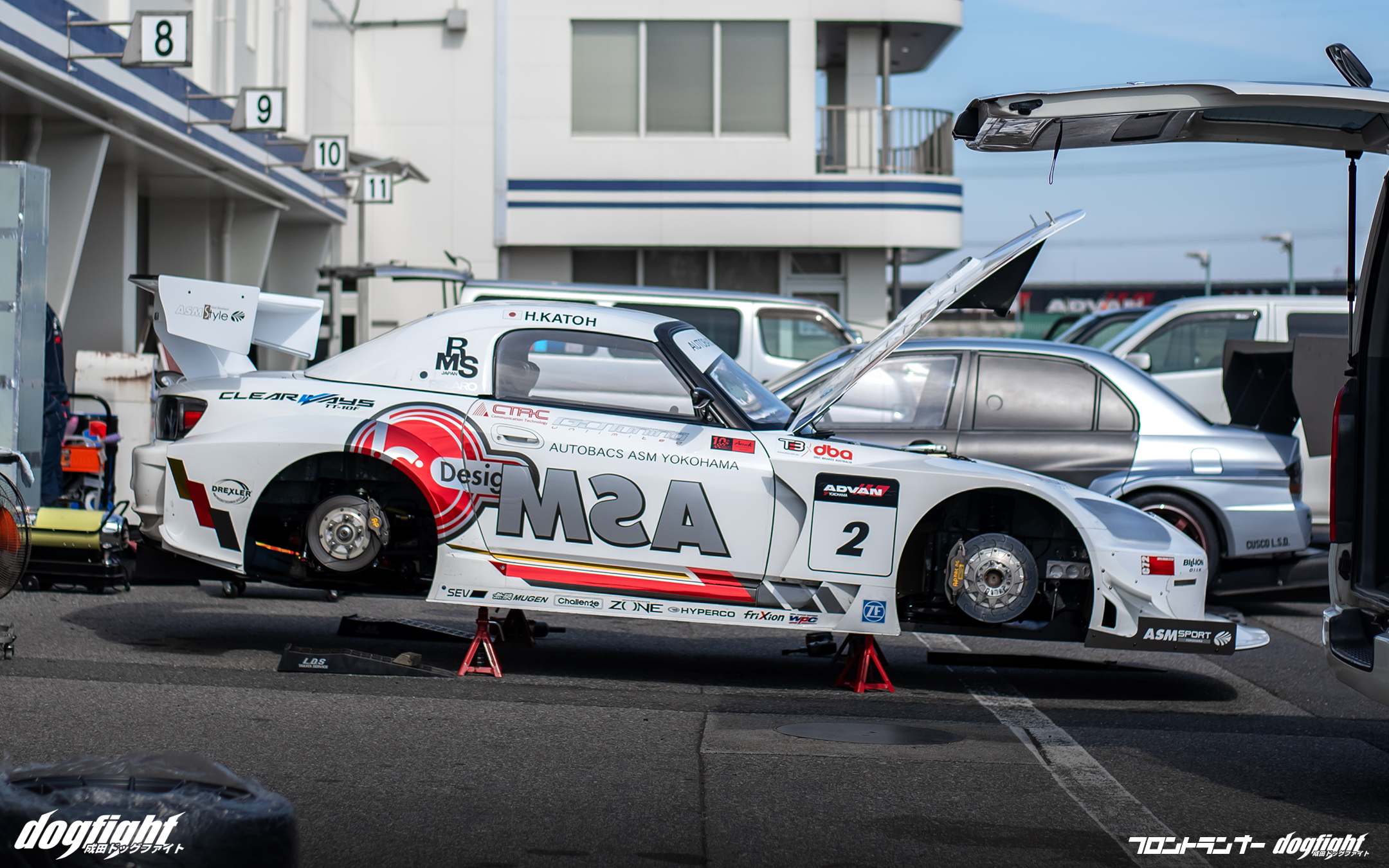



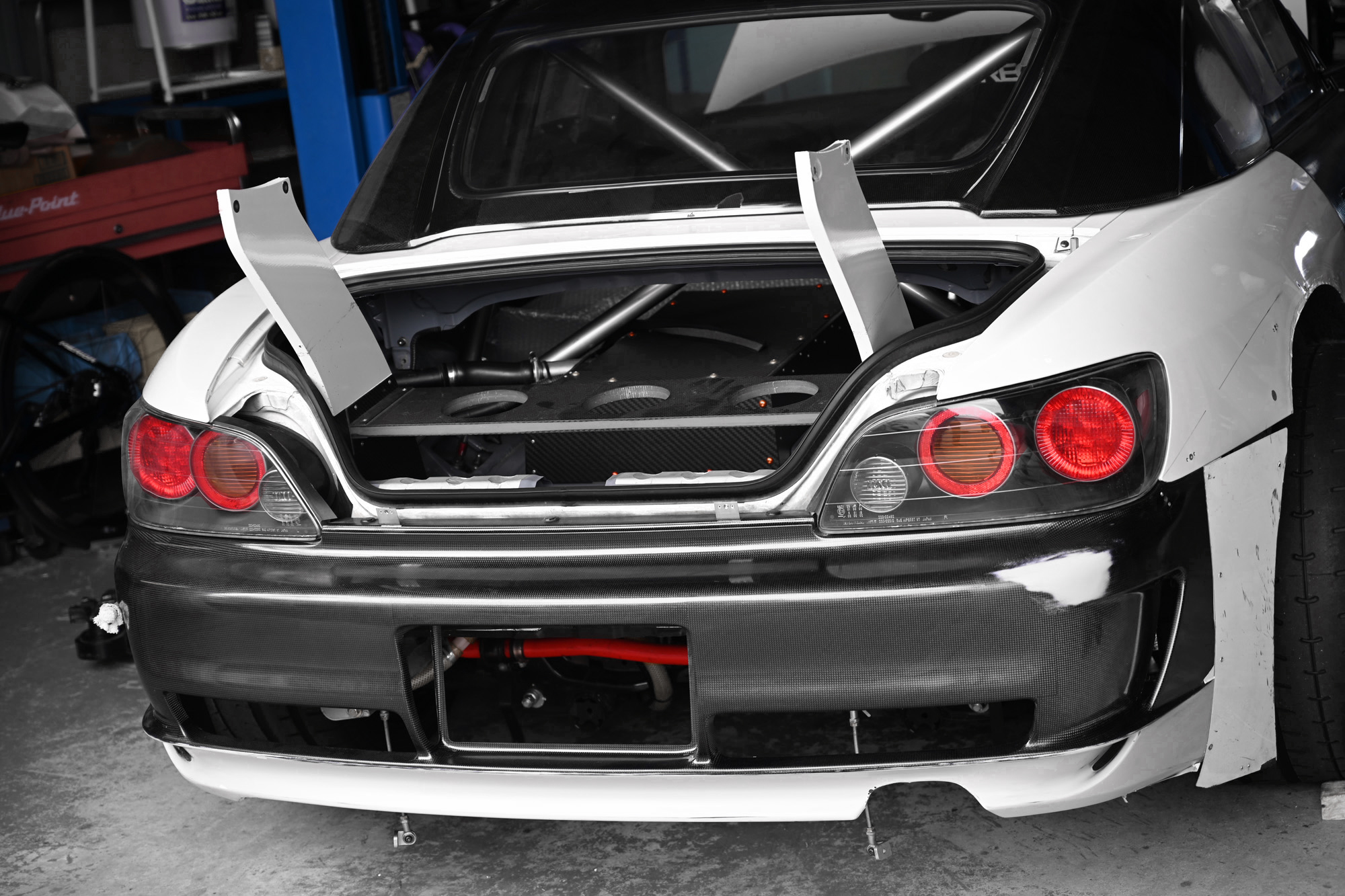
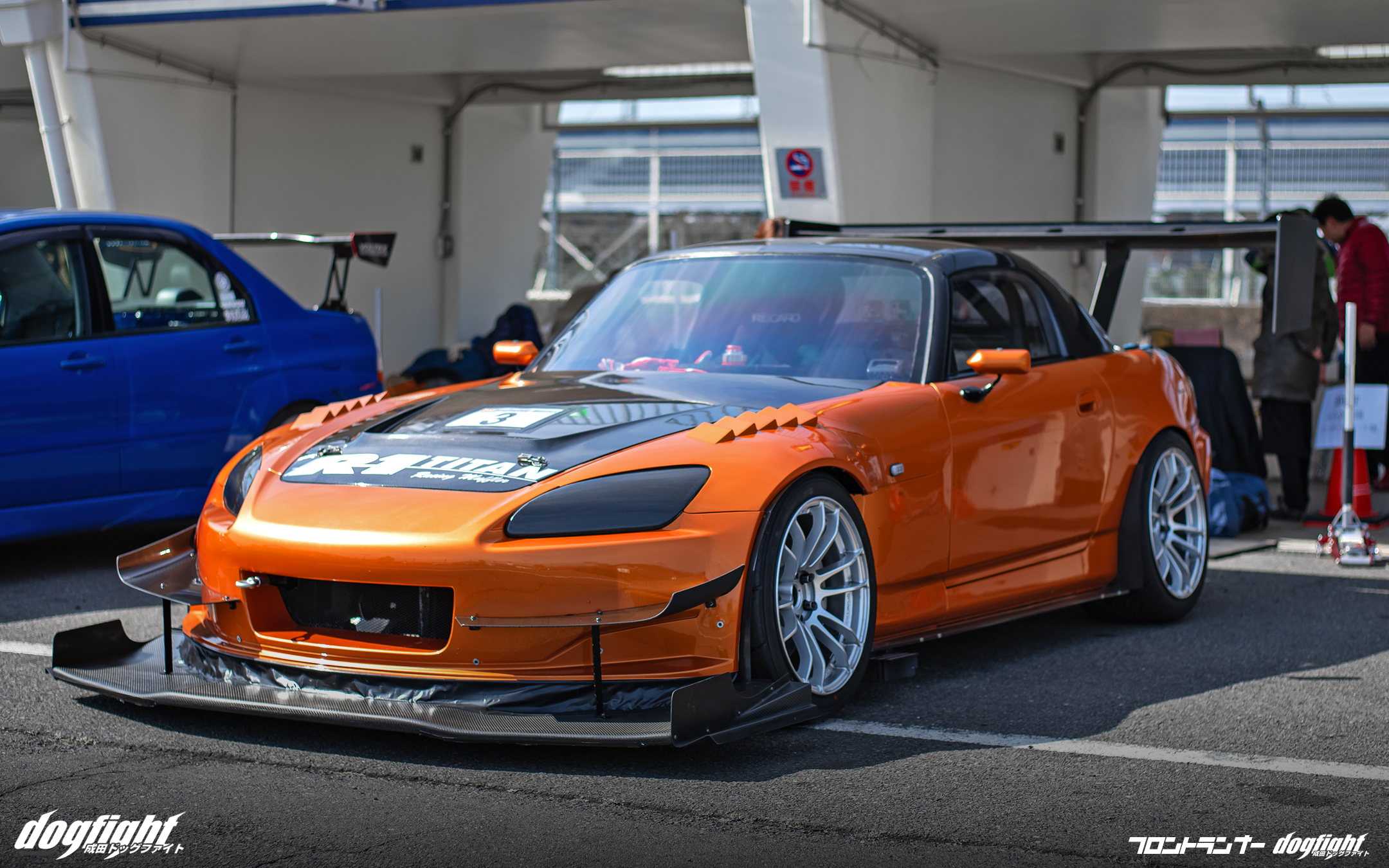


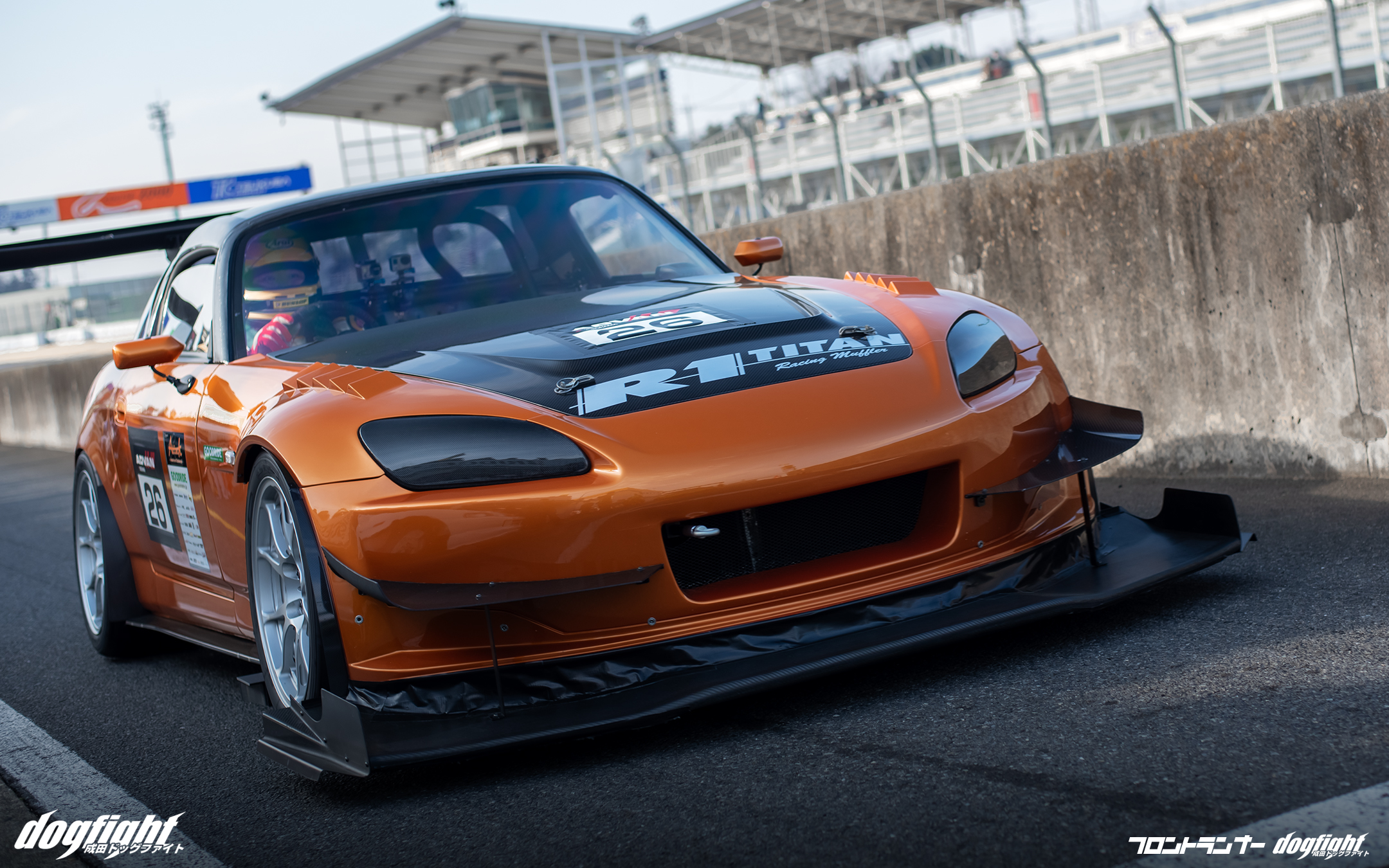
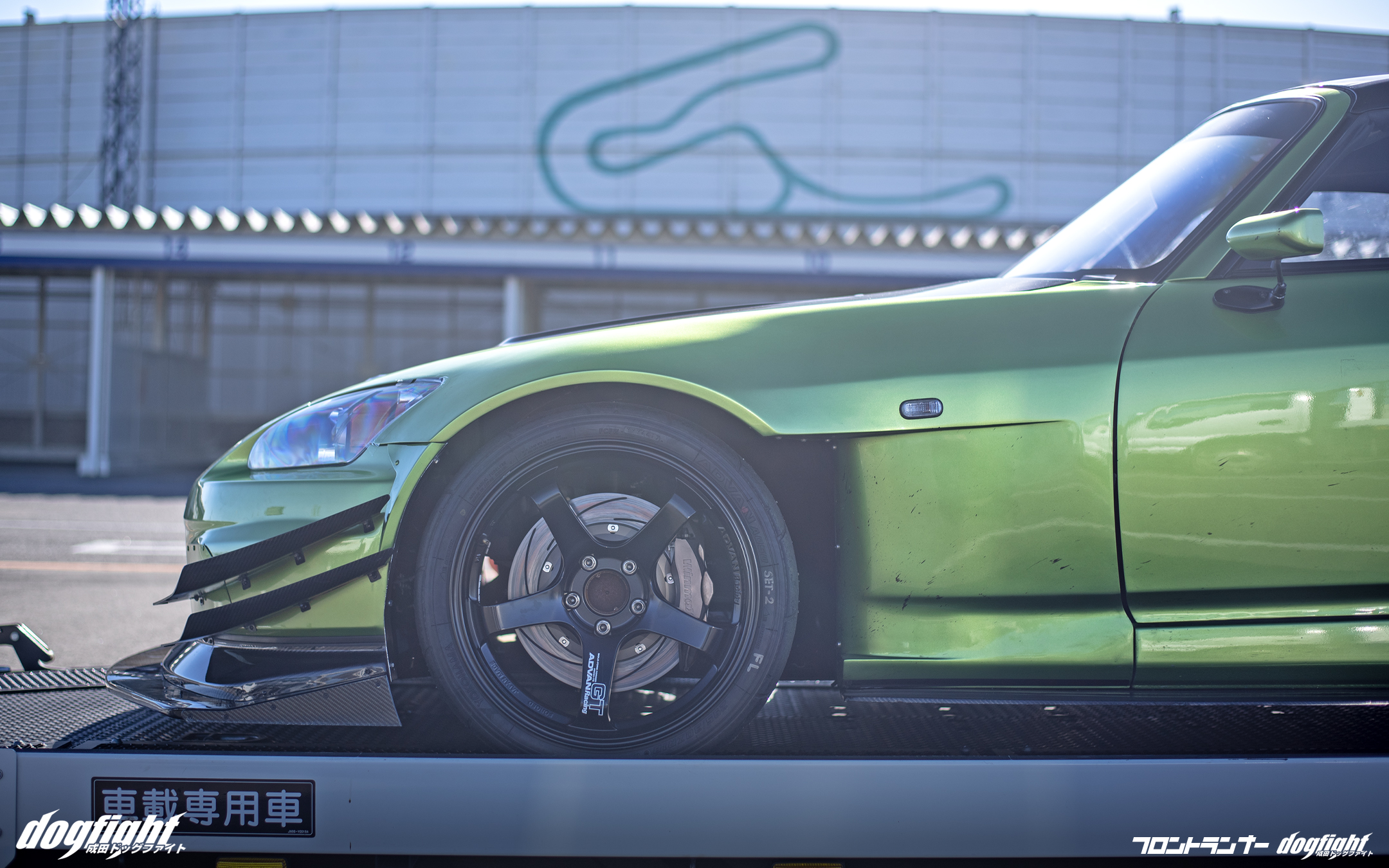







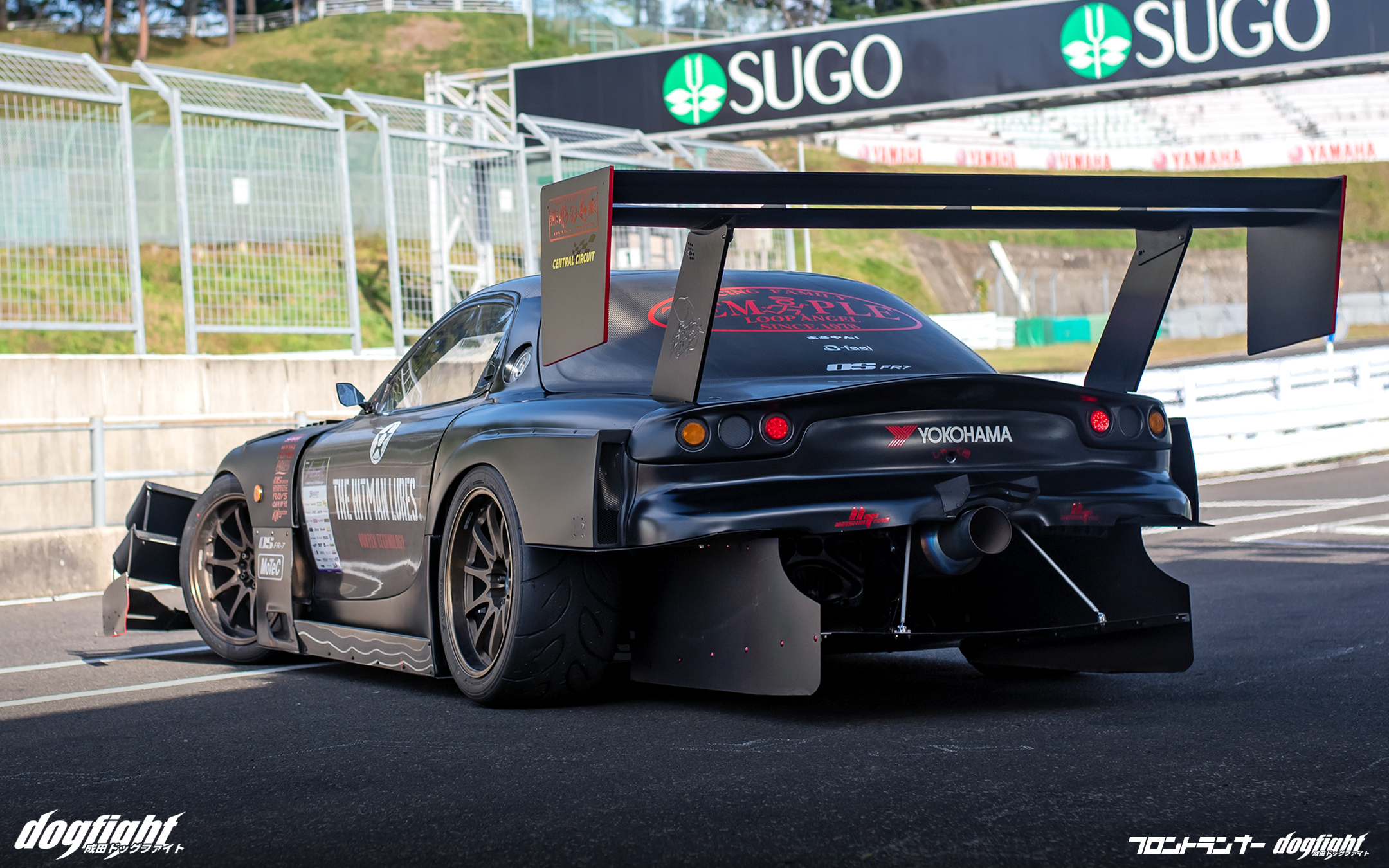
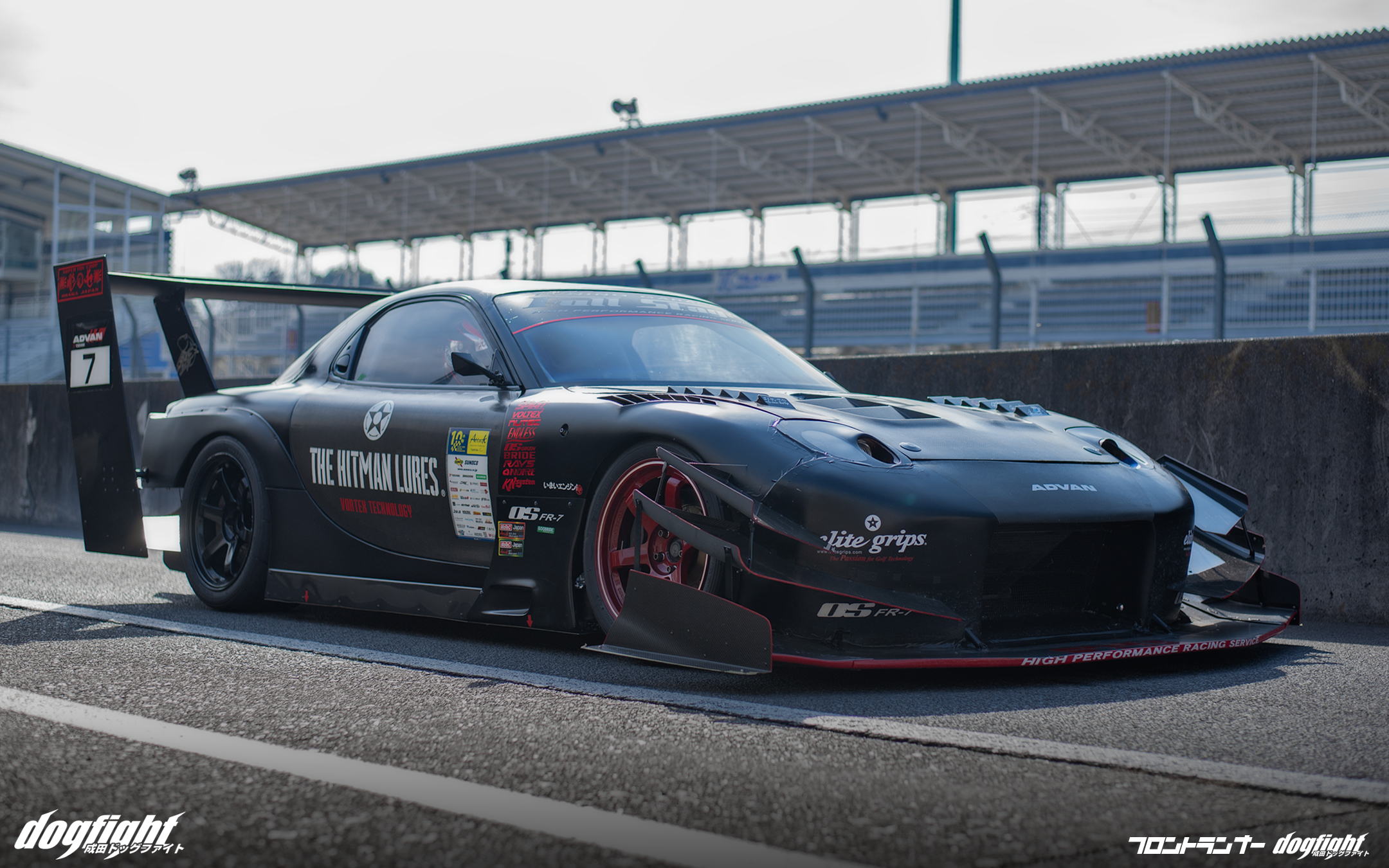






Amazing journalism and attention to detail, thank you!
thanks for reading!
So I just revisited this article after remembering out of the blue a small detail that was out of place. I’m quite sure “Shark” Iiri and his co-driver Yamano won the GT300 driver AND team points in 2006 and not 2007. Another time attack regular “NOB” Taniguchi came in third that year too in the Vemac.
I only know this because I’ve watched the 2006 season again recently. The #7 Aspara Drink RX7 is my all time favorite car. Ever. Lol
Thank you, good eye! Just checked the archives again, and you’re correct, it was 2006 not 2007.
Thank you for this. I’m a big fan of your coverage.
Thanks for reading!
Pingback:Tsukuba Machine Check! The ASM AP1 S2000 CAR 1 Returns To Time Attack! – NA&FR
Pingback:Gallery: The ASM AP1 S2000 CAR 1 Returns To Tsukuba